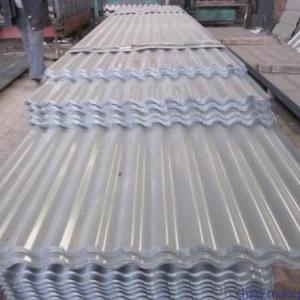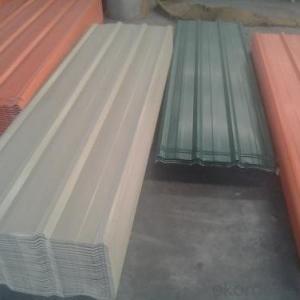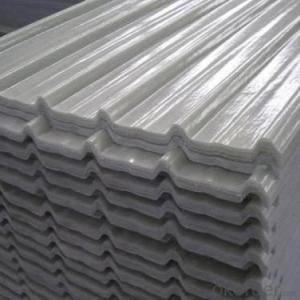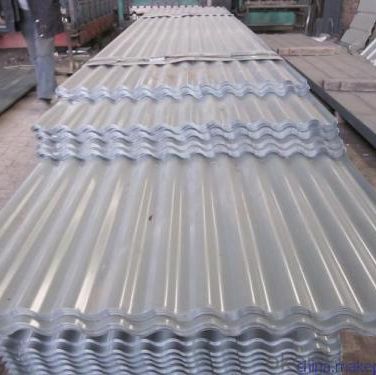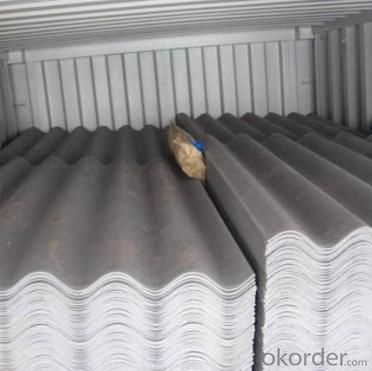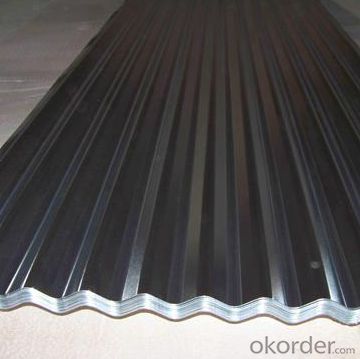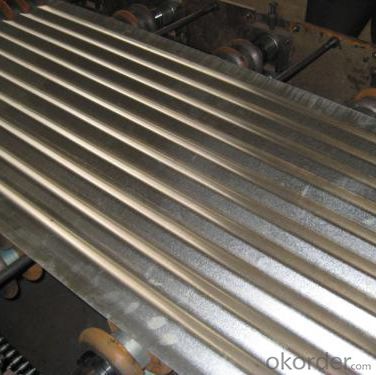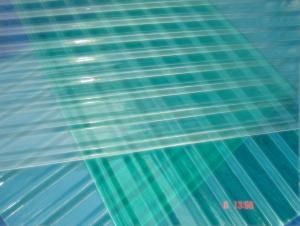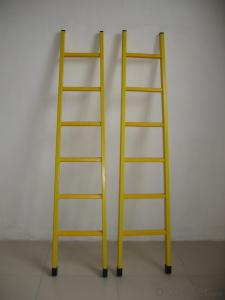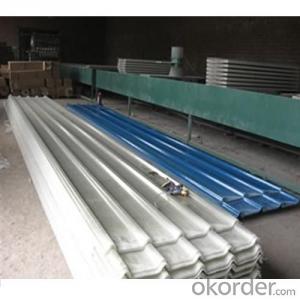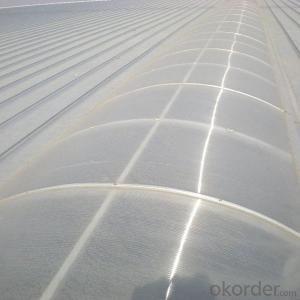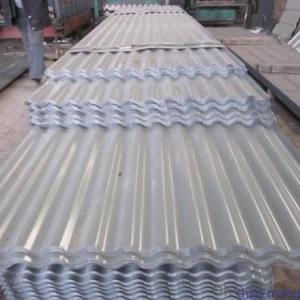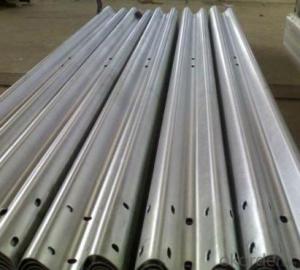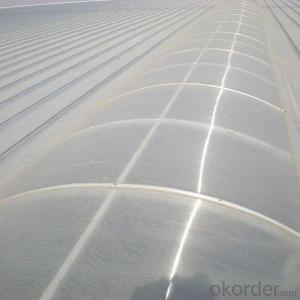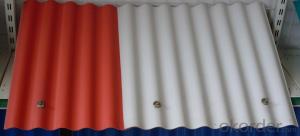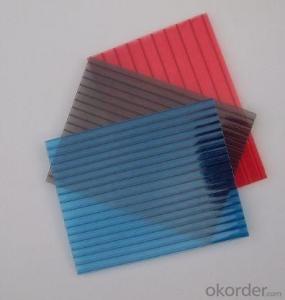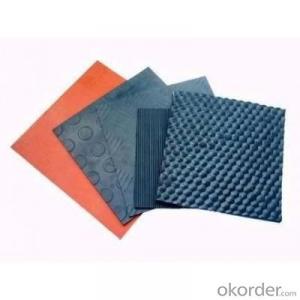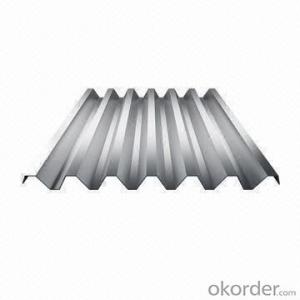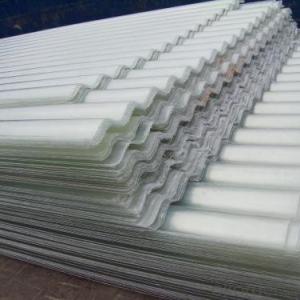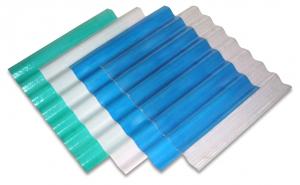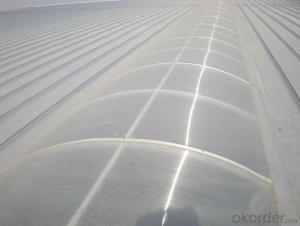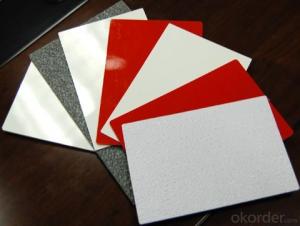Fiberglass Roofing Sheets/ Corrugated Plane Skylight
- Loading Port:
- Tianjin
- Payment Terms:
- TT OR LC
- Min Order Qty:
- 200 m
- Supply Capability:
- 30000 m/month
OKorder Service Pledge
OKorder Financial Service
You Might Also Like
Specification
PRODUCT DESCRIPTION
FRP plane skylightusually use a protecting facility in construction site,steel structured workshop and warehouse,canopy,packingsheds,corridors,studio light awning and greenhouse etc as the excellent light transmittance.
FRP plane skylightis the more strengthened, safety, and more econimal greenhouse panel with the properties of waterproof,good light transmittance,heat insulation,strong impact resistant,withstand extreme temperature.
Normal thinkness:1.2mm,1.5mm,2.0mm
FEATURES
1) The fiberglass content about 27%-30%.
2) Weather resistant and Self-clean ability
3) Excellent yellowness resistance
4) Strong impact resistant and low bending rate
5) Withstand extreme temperature from -38 degree to +110 degree for a long time
6) Aging resistant: specified F4 film added on surface and gel coat makes it endurable for long.
7) More strengthened, safer, cleaner and more economical greenhouse panel.
8) Mainly serve the big factory, warehouse, super markets and other steel-structured project.
SPECIFICATIONS
Thickness | Mesh size | Panel size | Open area | Weight |
(MM) | (MM) | (MM) | % | (kg/m2) |
25 | 38*38 | 1220*3660 | 68 | 12.5 |
1220*4076 | ||||
1220*4000 | ||||
30 | 38*38 | 1220*3660 | 68 | 14.75 |
1220*4000 | ||||
38 | 38*38 | 1007*4047 | 68 | 19.5 |
1220*3660 | ||||
1220*4000 | ||||
50.7 | 50.7*50.7 | 1220*3660 | 71 | 23.5 |
1220*4000 | ||||
30 | 19*19 | 1007*4007 | 40 | 18.1 |
38 | 19*19 | 1007*4007 | 40 | 23.5 |
PICTURES
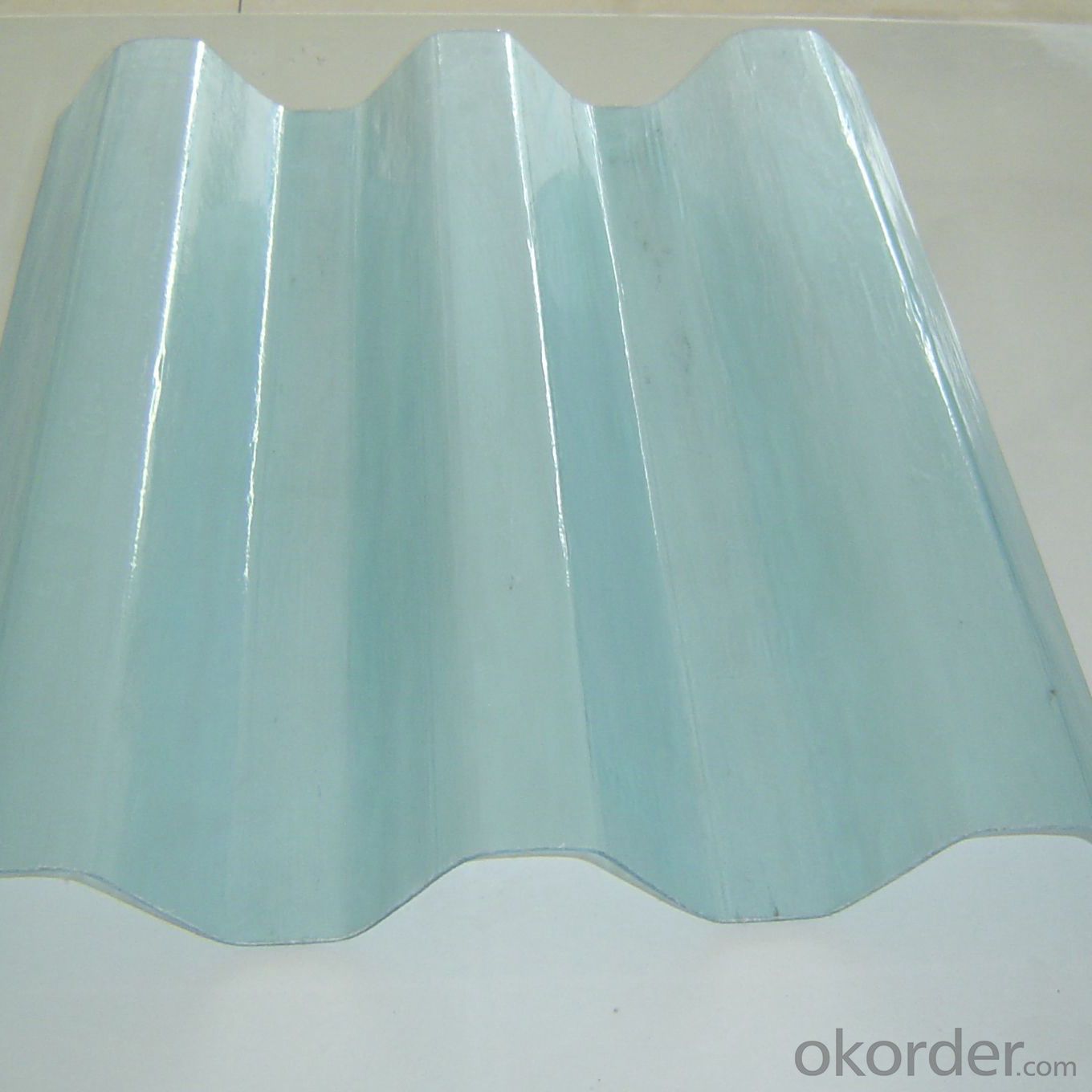
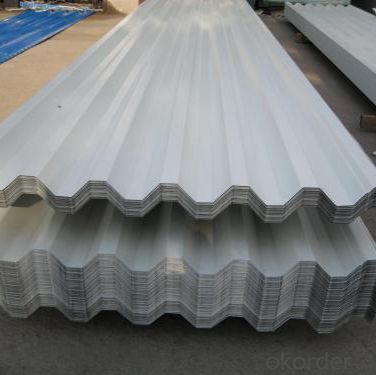
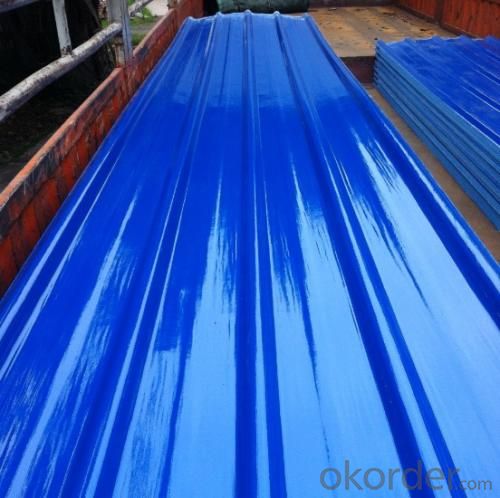
- Q: What is the difference between glass fiber reinforced plastic daylighting tile and glass daylighting tile?
- Mainly in accordance with the classification of resins, ordinary lighting tiles are usually resin and glass fiber or glass mat based raw materials.
- Q: Do FRP roofing panels require a specific type of roof insulation or thermal barrier?
- FRP roofing panels typically need a specific kind of roof insulation or thermal barrier. These panels are known for their ability to regulate temperature and reduce heat transfer due to their low thermal conductivity and high insulation properties. However, in order to maximize their efficiency and energy-saving capabilities, it is important to install the right insulation or thermal barrier beneath the FRP roofing panels. The type of insulation or thermal barrier required depends on several factors, including the climate, building codes, and specific project requirements. Common options for roof insulation include rigid foam insulation boards, spray foam insulation, and mineral wool insulation. These materials provide additional thermal resistance and prevent heat loss or gain through the roofing system. Furthermore, it is crucial to consider vapor barriers in the roofing assembly to control moisture diffusion. Vapor barriers help prevent condensation within the roof system, which can lead to mold growth or structural damage. The choice of vapor barrier depends on the specific application and climatic conditions. In conclusion, while FRP roofing panels have inherent insulation properties, it is vital to choose and install the appropriate roof insulation or thermal barrier to optimize performance, energy efficiency, and moisture management in the roofing system. Seeking advice from a professional roofing contractor or engineer ensures the correct selection and installation of the necessary materials for your specific project.
- Q: Can FRP roofing panels be used in cold climates?
- Yes, FRP (Fiberglass Reinforced Plastic) roofing panels can be used in cold climates. FRP roofing panels are known for their durability and ability to withstand extreme weather conditions, including cold temperatures. They have excellent thermal insulation properties, which help to prevent heat loss and keep the interior of buildings warm. Additionally, FRP panels are resistant to damage caused by freezing and thawing cycles, making them a suitable choice for cold climates where temperature fluctuations are common. However, it is important to ensure proper installation and maintenance of FRP roofing panels to maximize their performance and longevity in cold weather conditions.
- Q: Can FRP roofing panels be painted or coated with a protective finish?
- Yes, FRP (Fiberglass Reinforced Plastic) roofing panels can be painted or coated with a protective finish. The smooth surface of FRP panels allows for easy application of paint or coatings. However, it is important to select the appropriate type of paint or coating that is compatible with the FRP material. Acrylic or latex-based paints are generally recommended for FRP panels as they adhere well and provide good durability. Before applying any paint or coating, it is crucial to properly clean and prepare the surface by removing any dirt, dust, or grease. Additionally, it is advisable to consult the manufacturer's guidelines or seek professional advice to ensure the best results and maintain the structural integrity of the FRP roofing panels.
- Q: Can FRP roofing panels be used for car washes?
- Indeed, car washes can utilize FRP (Fiberglass Reinforced Plastic) roofing panels. These panels find widespread utilization in industrial and commercial settings, such as car washes, owing to their robustness, potency, and ability to withstand an array of chemicals and weather conditions. Renowned for their capacity to endure moisture, UV rays, and extreme temperatures, FRP panels prove to be optimal for car wash environments that experience constant exposure to water, cleaning solutions, and sunlight. Furthermore, these lightweight panels are effortless to install and demand minimal upkeep, thereby augmenting their appropriateness for car wash applications.
- Q: Can FRP roofing panels be used in curved or complex roof designs?
- Yes, FRP (Fiberglass Reinforced Plastic) roofing panels can indeed be used in curved or complex roof designs. FRP panels are known for their flexibility and versatility, making them suitable for various architectural designs. These panels can be easily molded and shaped to fit curved or complex roof structures, allowing for unique and visually appealing designs. Additionally, FRP roofing panels offer excellent durability, weather resistance, and UV protection, making them a reliable and long-lasting option for any roofing project, including those with curved or complex designs.
- Q: Can FRP roofing panels be installed on top of insulation?
- Yes, FRP roofing panels can be installed on top of insulation. In fact, insulation is often recommended as it helps improve the energy efficiency and thermal performance of the roofing system.
- Q: Are FRP roofing panels resistant to high winds?
- Yes, FRP (Fiberglass Reinforced Plastic) roofing panels are generally resistant to high winds. The strength and durability of FRP panels make them capable of withstanding strong winds without getting damaged or blown away. The fiberglass reinforcement in the panels adds extra strength and stiffness, making them more resistant to wind uplift. Additionally, FRP panels are often installed with proper fastening systems, such as screws or clips, to secure them firmly to the structure. This further enhances their resistance to high winds. However, it is important to note that the specific wind resistance of FRP roofing panels may vary depending on factors such as the panel thickness, installation method, and the specific wind load requirements of the building code in the area. Therefore, it is advisable to consult with the manufacturer or a roofing professional to ensure that the FRP panels chosen are suitable for the specific wind conditions in the location where they will be installed.
- Q: Are FRP roofing panels flexible?
- Typically, FRP (Fiberglass Reinforced Plastic) roofing panels are not regarded as flexible. Despite possessing a certain level of flexibility, they are predominantly inflexible and robust. FRP roofing panels are engineered to offer robustness, longevity, and protection against impact, weather conditions, and UV rays. Nevertheless, it should be noted that the flexibility of FRP panels may differ depending on the manufacturer and panel thickness. In some instances, thinner FRP panels may showcase a degree of flexibility, albeit considerably less than other roofing materials like PVC or TPO membranes.
- Q: Can FRP roofing panels be cut or trimmed on-site during installation?
- Yes, FRP (Fiberglass Reinforced Plastic) roofing panels can be cut or trimmed on-site during installation. FRP panels are typically made from a strong and durable material that can be easily modified to fit the specific dimensions and requirements of a project. However, it is important to use the appropriate tools and techniques to ensure a clean and precise cut. Using a circular saw with a fine-toothed blade or a jigsaw with a carbide-tipped blade are common methods for cutting FRP panels. It is also recommended to wear appropriate safety gear, such as goggles and gloves, during the cutting process to protect against any potential debris or sharp edges. Overall, with the right tools and precautions, FRP roofing panels can be successfully cut or trimmed on-site to achieve the desired fit and finish.
Send your message to us
Fiberglass Roofing Sheets/ Corrugated Plane Skylight
- Loading Port:
- Tianjin
- Payment Terms:
- TT OR LC
- Min Order Qty:
- 200 m
- Supply Capability:
- 30000 m/month
OKorder Service Pledge
OKorder Financial Service
Similar products
Hot products
Hot Searches
Related keywords
